-
 Bitcoin
Bitcoin $117900
0.31% -
 Ethereum
Ethereum $3766
0.28% -
 XRP
XRP $3.176
-0.31% -
 Tether USDt
Tether USDt $1.000
0.00% -
 BNB
BNB $795.6
1.51% -
 Solana
Solana $186.8
-1.09% -
 USDC
USDC $0.9999
-0.01% -
 Dogecoin
Dogecoin $0.2353
-1.33% -
 TRON
TRON $0.3226
1.49% -
 Cardano
Cardano $0.8172
-1.08% -
 Sui
Sui $4.178
3.06% -
 Hyperliquid
Hyperliquid $43.05
-3.39% -
 Stellar
Stellar $0.4367
-0.57% -
 Chainlink
Chainlink $18.62
1.47% -
 Hedera
Hedera $0.2828
6.63% -
 Bitcoin Cash
Bitcoin Cash $584.7
5.65% -
 Avalanche
Avalanche $24.81
2.53% -
 Litecoin
Litecoin $112.8
-0.88% -
 UNUS SED LEO
UNUS SED LEO $8.975
-0.08% -
 Shiba Inu
Shiba Inu $0.00001395
-1.07% -
 Toncoin
Toncoin $3.285
-1.05% -
 Ethena USDe
Ethena USDe $1.001
0.01% -
 Polkadot
Polkadot $4.123
0.76% -
 Uniswap
Uniswap $10.49
-0.18% -
 Monero
Monero $326.5
0.14% -
 Dai
Dai $0.9999
-0.02% -
 Bitget Token
Bitget Token $4.576
0.34% -
 Pepe
Pepe $0.00001247
-1.55% -
 Cronos
Cronos $0.1400
3.77% -
 Aave
Aave $295.1
-0.73%
Does the closing of the Bollinger Bands indicate a change in the market? Be alert to these breakthrough signals
When Bollinger Bands close, it signals low volatility and often precedes significant price movements in the crypto market, prompting traders to watch for breakout signals.
Jun 09, 2025 at 05:56 pm
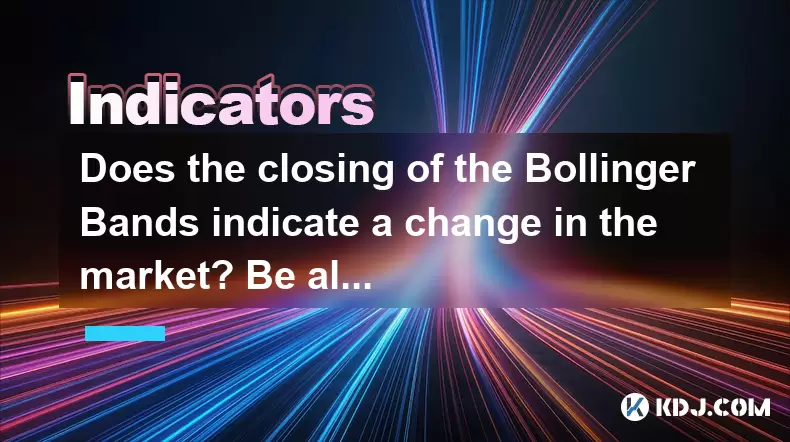
The Bollinger Bands are a popular technical analysis tool used by traders in the cryptocurrency market to gauge volatility and potential price movements. When the Bollinger Bands close, it often signals a significant change in market dynamics. This article will explore how the closing of the Bollinger Bands indicates a change in the market and highlight the breakthrough signals traders should be alert to.
Understanding Bollinger Bands
Bollinger Bands consist of three lines: a simple moving average (SMA) in the middle, an upper band, and a lower band. The upper and lower bands are typically set two standard deviations away from the SMA. The purpose of Bollinger Bands is to provide a relative definition of high and low prices and to identify periods of high and low volatility.
In the context of cryptocurrency trading, Bollinger Bands can help traders understand whether the market is in a consolidation phase or if it's about to experience a significant price movement. When the bands close or narrow, it suggests that the market is experiencing low volatility, which often precedes a significant price move.
The Significance of Closing Bollinger Bands
When the Bollinger Bands close, it means that the upper and lower bands are moving closer to the middle band. This narrowing indicates that the market is in a period of low volatility. Traders often interpret this as a sign that the market is preparing for a breakout or breakdown.
Low volatility periods can be deceptive because they can lull traders into a false sense of security. However, experienced traders know that these periods are often followed by significant price movements. The closing of the Bollinger Bands can be a precursor to a bullish or bearish trend, depending on the direction of the subsequent breakout.
Identifying Breakthrough Signals
To capitalize on the potential market changes indicated by closing Bollinger Bands, traders need to be alert to specific breakthrough signals. Here are the key signals to watch for:
Price Breakout Above the Upper Band: When the price breaks above the upper Bollinger Band after a period of narrowing, it is often a strong bullish signal. This indicates that the market is entering a period of increased volatility and upward momentum. Traders may consider entering long positions to take advantage of the potential upward trend.
Price Breakdown Below the Lower Band: Conversely, if the price breaks below the lower Bollinger Band following a period of narrowing, it is typically a bearish signal. This suggests that the market is entering a phase of increased volatility and downward momentum. Traders might look to enter short positions to profit from the potential downward trend.
Volume Confirmation: A breakout or breakdown accompanied by high trading volume provides additional confirmation of the signal's strength. High volume suggests that the market move is backed by significant interest and is more likely to sustain.
Candlestick Patterns: Traders should also look for specific candlestick patterns that form around the breakout or breakdown. Patterns such as bullish engulfing or bearish engulfing can reinforce the validity of the signal.
Practical Steps to Monitor Bollinger Bands
To effectively monitor Bollinger Bands and be alert to breakthrough signals, traders can follow these steps:
Choose a Timeframe: Decide on the timeframe that aligns with your trading strategy. Bollinger Bands can be applied to various timeframes, from minute charts to daily charts.
Set Up Bollinger Bands: Use a trading platform that supports technical analysis tools. Add Bollinger Bands to your chart with the default settings (typically a 20-period SMA and two standard deviations).
Monitor Band Width: Keep an eye on the width of the Bollinger Bands. When the bands start to narrow, it indicates a period of low volatility, and you should be prepared for a potential breakout or breakdown.
Watch for Breakouts: Once the bands have closed and the price starts to move, watch for the price to break above the upper band or below the lower band. Confirm the breakout with high volume and relevant candlestick patterns.
Set Alerts: Many trading platforms allow you to set price alerts. Consider setting alerts for when the price approaches or breaches the upper or lower Bollinger Bands to ensure you don't miss potential signals.
Examples of Bollinger Bands in Action
To illustrate how the closing of Bollinger Bands can signal a change in the market, let's look at a few hypothetical examples within the cryptocurrency market:
Bitcoin Example: Imagine that the Bollinger Bands on the Bitcoin daily chart have been steadily narrowing over the past two weeks. Suddenly, the price of Bitcoin breaks above the upper Bollinger Band with high volume and forms a bullish engulfing candlestick. This combination of signals suggests a strong bullish trend, and traders might consider entering long positions.
Ethereum Example: In another scenario, the Bollinger Bands on the Ethereum hourly chart have closed significantly. The price then breaks below the lower Bollinger Band with a surge in volume and a bearish engulfing candlestick. This indicates a potential bearish trend, and traders might consider short positions.
Altcoin Example: For an altcoin like Cardano, the Bollinger Bands on the 4-hour chart have been narrowing for several days. The price then breaks above the upper band with high volume and a bullish candlestick pattern. This could signal a bullish trend for Cardano, prompting traders to look for long opportunities.
The Importance of Risk Management
While the closing of Bollinger Bands can provide valuable insights into potential market changes, it's crucial for traders to implement risk management strategies. Here are some key practices to consider:
Set Stop-Loss Orders: Always use stop-loss orders to limit potential losses. Place these orders at logical levels, such as below the lower Bollinger Band for long positions or above the upper Bollinger Band for short positions.
Position Sizing: Manage your position size to ensure that no single trade can significantly impact your overall portfolio. A common rule of thumb is to risk no more than 1-2% of your trading capital on any single trade.
Diversify: Don't put all your eggs in one basket. Diversify your trades across different cryptocurrencies to spread risk.
Backtest Strategies: Before applying Bollinger Bands and other technical indicators in live trading, backtest your strategies using historical data to understand their effectiveness.
Frequently Asked Questions
Q: Can Bollinger Bands be used on all cryptocurrencies?
A: Yes, Bollinger Bands can be applied to any cryptocurrency that has sufficient trading data. However, the effectiveness of the indicator may vary depending on the liquidity and volatility of the specific cryptocurrency.
Q: How often should I check the Bollinger Bands for signals?
A: The frequency of checking Bollinger Bands depends on your trading timeframe and strategy. For day traders, checking hourly or even minute charts might be necessary, while swing traders might focus on daily or 4-hour charts.
Q: Are there other indicators that complement Bollinger Bands?
A: Yes, many traders use additional indicators to confirm signals from Bollinger Bands. Popular complementary indicators include the Relative Strength Index (RSI), Moving Average Convergence Divergence (MACD), and the Average True Range (ATR).
Q: Can Bollinger Bands predict market movements with certainty?
A: No, Bollinger Bands, like all technical indicators, cannot predict market movements with absolute certainty. They provide probabilistic signals based on historical price data, and traders should use them as part of a broader trading strategy.
Disclaimer:info@kdj.com
The information provided is not trading advice. kdj.com does not assume any responsibility for any investments made based on the information provided in this article. Cryptocurrencies are highly volatile and it is highly recommended that you invest with caution after thorough research!
If you believe that the content used on this website infringes your copyright, please contact us immediately (info@kdj.com) and we will delete it promptly.
- Cryptos to Watch in 2025: Punisher Coin, Chainlink, and the Altcoin Arena
- 2025-07-27 18:30:13
- Bitcoin, Altcoins, Rebound: Navigating the Crypto Comeback Trail
- 2025-07-27 18:30:13
- Ethereum, Bitcoin, and Altcoins: A Shift in Crypto Tides?
- 2025-07-27 19:10:13
- Windtree Therapeutics' Bold BNB Strategy: A $520 Million Crypto Play
- 2025-07-27 19:10:13
- Solana, Staking, and Unilabs: What's the Buzz in the Crypto Space?
- 2025-07-27 16:50:13
- VeChain, HBAR, Remittix: Navigating the Crypto Landscape in 2025
- 2025-07-27 17:10:12
Related knowledge
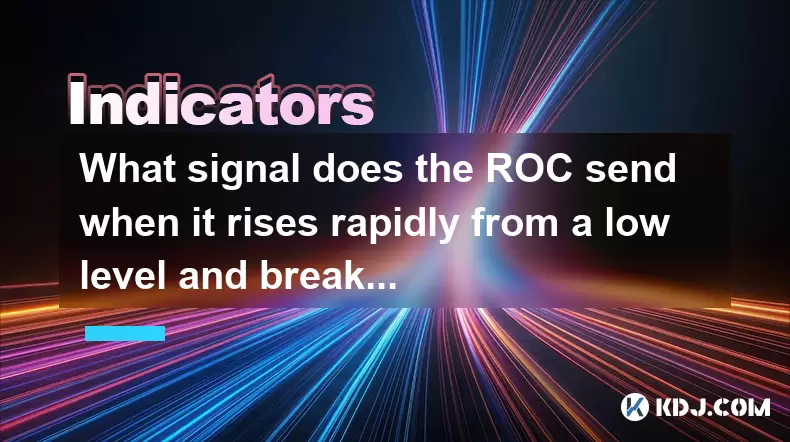
What signal does the ROC send when it rises rapidly from a low level and breaks through the zero axis?
Jul 27,2025 at 10:15am
Understanding the Rate of Change (ROC) IndicatorThe Rate of Change (ROC) is a momentum-based oscillator used in technical analysis to measure the perc...
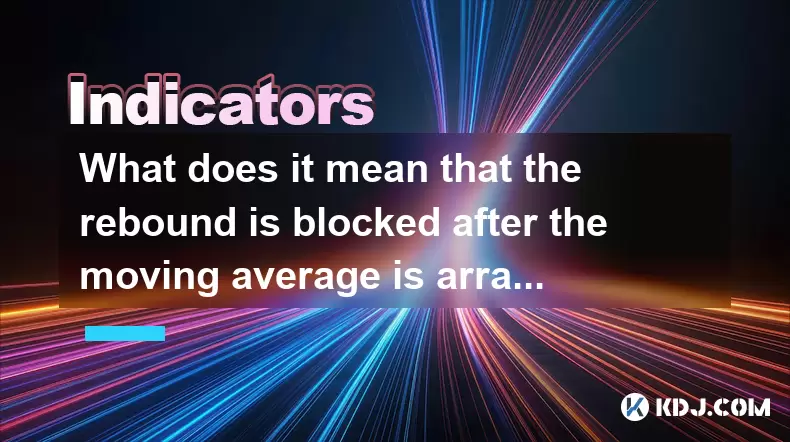
What does it mean that the rebound is blocked after the moving average is arranged in a short position for the first time?
Jul 26,2025 at 10:51am
Understanding the Short-Term Moving Average ConfigurationWhen traders refer to a 'short position arrangement' in moving averages, they are describing ...
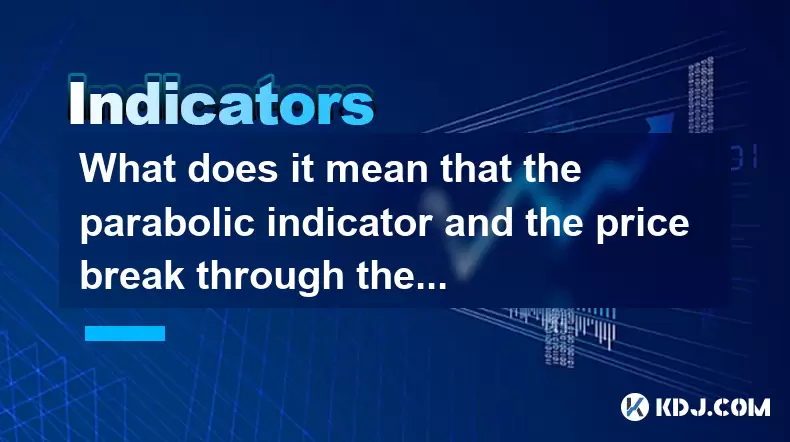
What does it mean that the parabolic indicator and the price break through the previous high at the same time?
Jul 26,2025 at 07:22pm
Understanding the Parabolic Indicator (SAR)The Parabolic SAR (Stop and Reverse) is a technical analysis tool developed by J. Welles Wilder to identify...
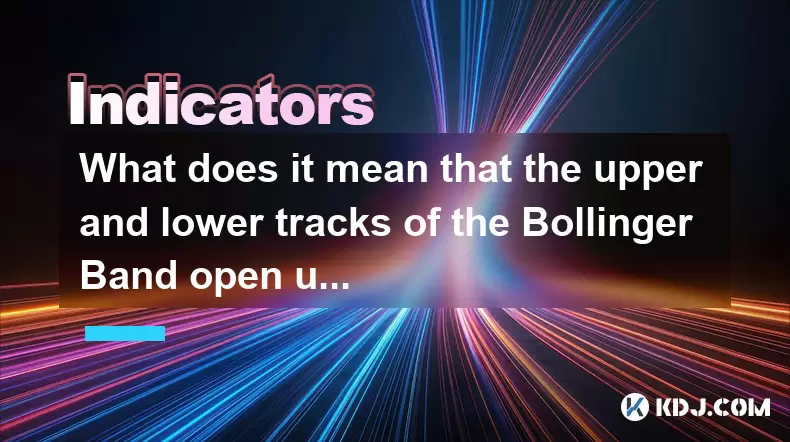
What does it mean that the upper and lower tracks of the Bollinger Band open upward at the same time?
Jul 27,2025 at 02:49pm
Understanding the Bollinger Band StructureThe Bollinger Band is a widely used technical analysis tool developed by John Bollinger. It consists of thre...
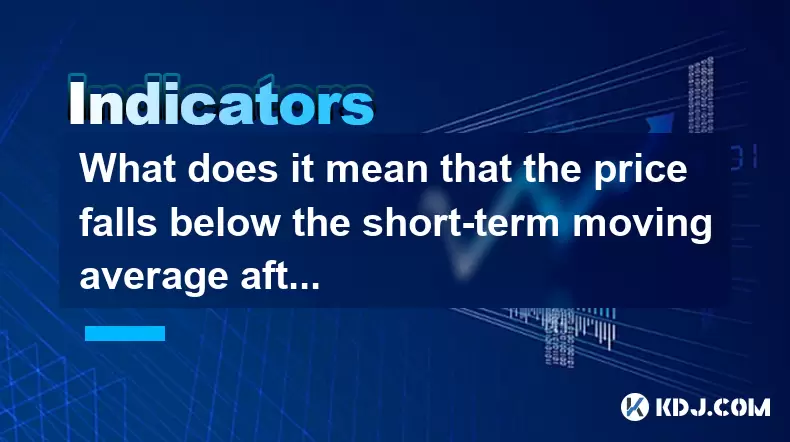
What does it mean that the price falls below the short-term moving average after the RSI top divergence?
Jul 26,2025 at 11:01pm
Understanding RSI Top Divergence in Cryptocurrency TradingThe Relative Strength Index (RSI) is a momentum oscillator widely used in cryptocurrency tra...
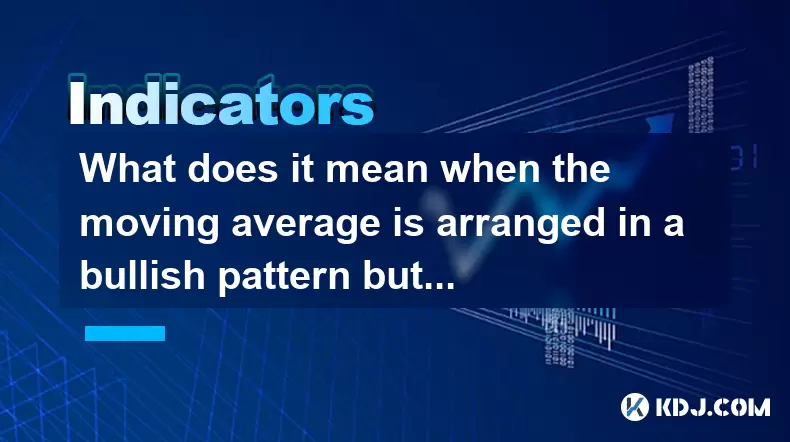
What does it mean when the moving average is arranged in a bullish pattern but the MACD bar is shortened?
Jul 27,2025 at 06:07am
Understanding the Bullish Moving Average PatternWhen traders observe a bullish moving average pattern, they typically refer to a configuration where s...

What signal does the ROC send when it rises rapidly from a low level and breaks through the zero axis?
Jul 27,2025 at 10:15am
Understanding the Rate of Change (ROC) IndicatorThe Rate of Change (ROC) is a momentum-based oscillator used in technical analysis to measure the perc...

What does it mean that the rebound is blocked after the moving average is arranged in a short position for the first time?
Jul 26,2025 at 10:51am
Understanding the Short-Term Moving Average ConfigurationWhen traders refer to a 'short position arrangement' in moving averages, they are describing ...

What does it mean that the parabolic indicator and the price break through the previous high at the same time?
Jul 26,2025 at 07:22pm
Understanding the Parabolic Indicator (SAR)The Parabolic SAR (Stop and Reverse) is a technical analysis tool developed by J. Welles Wilder to identify...

What does it mean that the upper and lower tracks of the Bollinger Band open upward at the same time?
Jul 27,2025 at 02:49pm
Understanding the Bollinger Band StructureThe Bollinger Band is a widely used technical analysis tool developed by John Bollinger. It consists of thre...

What does it mean that the price falls below the short-term moving average after the RSI top divergence?
Jul 26,2025 at 11:01pm
Understanding RSI Top Divergence in Cryptocurrency TradingThe Relative Strength Index (RSI) is a momentum oscillator widely used in cryptocurrency tra...

What does it mean when the moving average is arranged in a bullish pattern but the MACD bar is shortened?
Jul 27,2025 at 06:07am
Understanding the Bullish Moving Average PatternWhen traders observe a bullish moving average pattern, they typically refer to a configuration where s...
See all articles

























































































